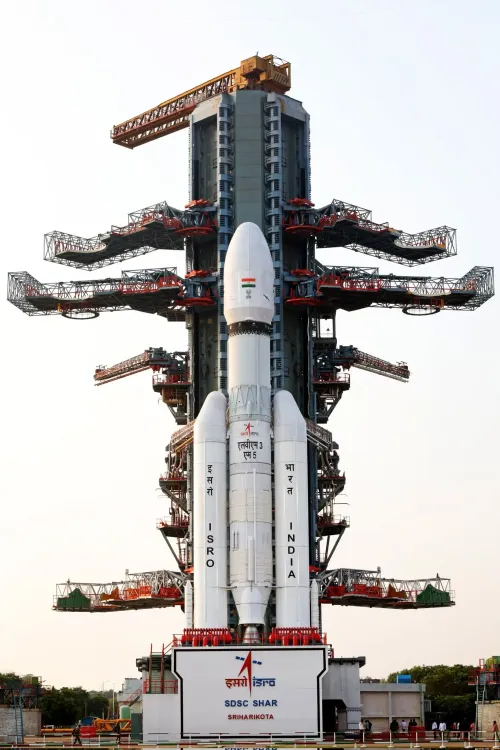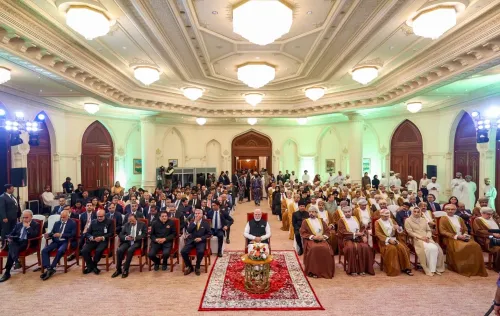Is ISRO’s ‘Bahubali’ Rocket Launch a Historic Triumph for India?

Synopsis
Key Takeaways
- ISRO launched the CMS-03 satellite successfully.
- The launch was conducted using the LVM3-M5 rocket.
- This event is viewed as a monumental achievement for India's space program.
- CMS-03 is the heaviest satellite launched from India.
- The LVM3-M5 rocket is India's most powerful launch vehicle.
New Delhi, Nov 2 (NationPress) In a significant landmark for India’s space exploration, ISRO successfully launched its most substantial communication satellite, CMS-03, using the LVM3-M5 rocket from Sriharikota on Sunday.
This mission, hailed by experts as a remarkable achievement, further emphasizes India’s expanding capabilities in deploying heavy-payload satellites for communication and strategic applications.
Lt. Gen. AK Bhatt (Retd.), Director General of the Indian Space Association (ISpA), described this event as a pivotal moment for India’s space ambitions.
“The successful deployment of the CMS-03 satellite by the LVM3 rocket (known as Bahubali) is a historic milestone for India, showcasing our sovereign ability in launching substantial payloads for strategic uses,” he remarked.
According to Bhatt, “This satellite will transform our maritime and national security frameworks by facilitating advanced, secure communication channels essential for the Indian Ocean Region and the mainland.”
He emphasized that this success not only fortifies India’s strategic independence but also highlights the increasing involvement of the private sector in developing and maintaining national space assets.
“This launch by ISRO heralds a promising future for private sector collaboration and solidifies India’s status as a formidable force in space exploration,” Bhatt noted.
The LVM3-M5, affectionately referred to as the ‘Bahubali’ rocket, ascended with the CMS-03 satellite and adeptly positioned it into its designated orbit.
This launch signifies a new chapter in India’s space journey, underscoring the nation’s self-sufficiency in crafting and deploying advanced space technologies.
ISRO confirmed that CMS-03, recognized as the heaviest satellite launched from Indian territory, has been successfully placed into its target orbit.
“The satellite has reached its intended orbit,” stated P. Madhuri, Deputy Project Director of the SSLV Launch Complex, following the successful separation of CMS-03 from the launch vehicle.
The LVM3-M5, earlier known as the Geosynchronous Launch Vehicle Mark 3 (GSLV Mk 3), is recognized as India’s most powerful launch vehicle.
It employs a combination of solid, liquid, and cryogenic fuel engines, capable of transporting payloads of up to 8,000 kg to low-earth orbit and 4,000 kg to geosynchronous orbit.
The 43-meter-tall rocket journeyed through its various stages—including S200 solid boosters, L110 liquid stage, and the C25 cryogenic stage—marking an impeccable mission sequence as it achieved a velocity of 4.6 km per second prior to orbit circularization.










